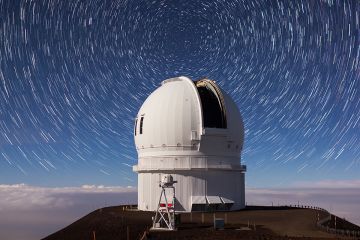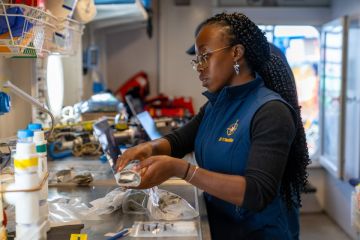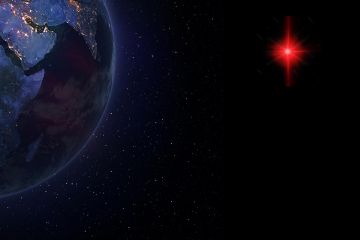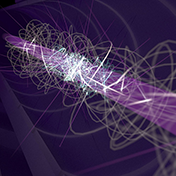Small, dark and ancient: Scientists discover a new (but old) Milky Way satellite
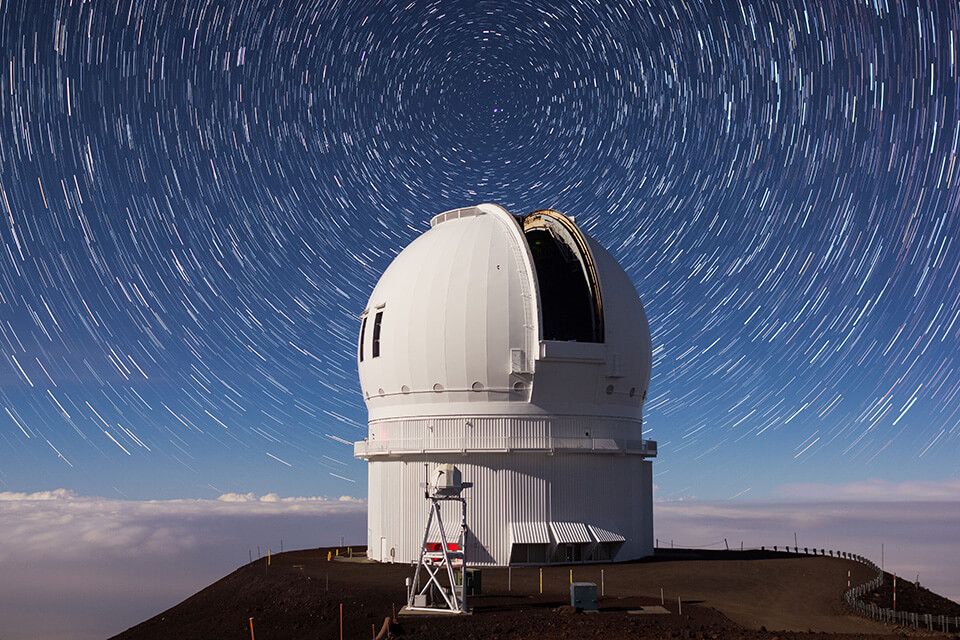
An international team of scientists led by astronomers at the University of Victoria has discovered an ancient group of stars orbiting our own galaxy, the Milky Way.
The newly discovered satellite consists of only five dozen bright stars spread over a volume just 10 light years across. This is miniscule compared to the Milky Way, which contains over ten billion stars, and measures a hundred thousand light years in diameter.
“It is either the faintest ancient star cluster known to date, or the faintest and closest known dwarf galaxy ever discovered,” says Simon Smith, a PhD student at UVic and the lead author of the recent The Astrophysical Journal paper describing the find. “Being able to detect such a tiny system, with only about 60 stars, speaks for the quality of the data that the team had to work with.”
The data came from the Ultraviolet Near-Infrared Optical Northern Survey (UNIONS) at the Canada-France-Hawaii telescope with follow-up data from the Keck Observatory, and the researchers are an international team from UVic, Yale University, the National Research Council of Canada Herzberg Astronomy and Astrophysics Research Centre, University of Toronto, Université Paris, Université de Strasbourg, University of Hawaii, Université PSL, University of Waterloo and Max-Planck-Institut für Astronomie.
The object, named Ursa Major III/UNIONS 1 or UMa3/U1 for short, was likely born long ago in the early days of the universe, as it consists of stars that appear to be more than 10 billion years old. The existence of faint, ancient, dark matter-dominated satellites is a cornerstone prediction of Cold Dark Matter, the leading theory for the origin of structure in the universe—identifying dark matter in this particular collection of stars would be strong support for that theory.

Smith says the presence of dark matter (the key distinguishing property between dwarf galaxies and star clusters) is highly likely, because the satellite’s orbit takes it through the inner regions of the Milky Way, where gravitational “tidal” forces are strongest. Without the binding presence of large amounts of dark matter, the satellite would not have survived long on its current orbit; it would have been pulled apart by those forces.
“This is a momentous discovery, and fully consistent with a long-standing prediction of the Cold Dark Matter theory,” says Julio Navarro, a UVic astronomer involved with the study. “This may be the faintest galaxy known, and also one of the most dark matter-dominated. It’s hard to see what else its unique set of properties might mean.”
In the April 2024 edition of The Astrophysical Journal, a companion study by a group of scientists from Carnegie Mellon University, UVic (including Smith and Navarro) and the National Research Council of Canada’s Herzberg Astronomy and Astrophysics Research Centre supports the findings and the team’s conclusions.
“Estimating the dark matter content of a dwarf galaxy requires accurate and repeated measurements of its stellar velocities,” says Raphaël Errani, who was a postdoctoral researcher at UVic, is now at Carnegie Mellon and lead author of the second study. “Remarkably, the measurements obtained with the Keck II telescope are tentatively consistent with those predicted by Lambda Cold Dark Matter. Without dark matter it is not obvious how UMa3/U1 could have been able to survive unscathed for billions of years.”
Photos
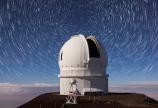
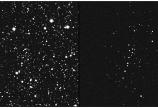
In this story
Keywords: Physics and Astronomy, Faculty of Science, astronomy, research, physics, partnerships, international
People: Julio Navarro, Simon Smith







